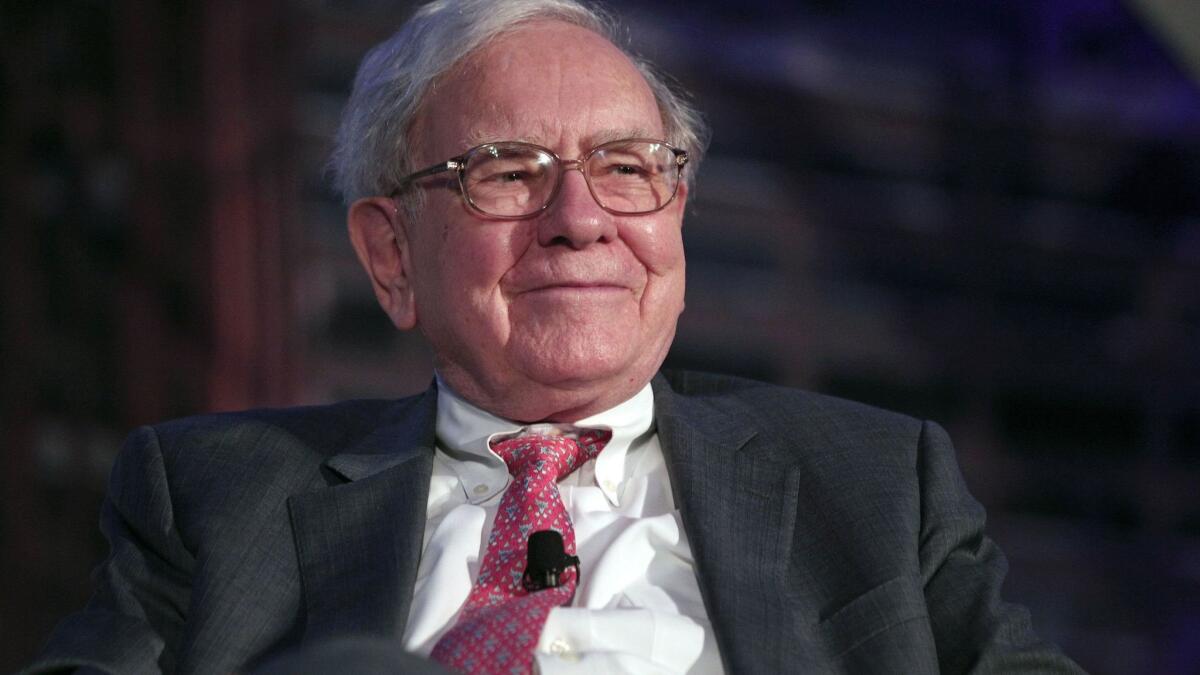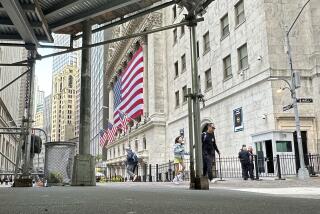Should I stay or should I go? What you need to know about financial markets today
- Share via
With all eyes on Wednesday’s inflation report, Wall Street got off to a positive start for the trading week.
Investment professionals say their clients didn’t panic during last week’s sharp correction. “I didn’t have to necessarily talk anyone off the ledge, like ‘Oh my God, should I sell everything?’” Mona Mahajan, U.S. investment strategist for Allianz Global Investors, told Bloomberg.
That probably applies more to wealthier investors who can afford professional advice. Main Street didn’t appear so calm. The world’s biggest exchange-traded fund, the SPDR S&P 500 (or SPY), saw 8% of its assets head for the exits a week ago, a record $23.6 billion. Alight Solutions, a human resources and wealth services provider that tracks trading in 401(k) retirement accounts, saw nearly 12 times normal trading volume Feb. 5. Through the week, most of the movement was out of stocks and into bonds and other fixed-income options. That appears to violate oft-cited advice of retirement advisors: Don’t look at your account in a free-fall, and if you do, don’t lock in losses by selling.
It was also a sharp reversal from January, when retirement money poured into stocks. “In January, only four of the 21 trading days saw participants favoring fixed income,” Alight noted. “All four of the trading days so far in February [through Thursday] have had more money going to fixed income than equities.”
Blame the computers?
The surprise wasn’t that stocks corrected last week, but rather that they fell so much so fast. That’s giving a lot of people another reason to blame machines — in this case, automated funds that track financial indexes. Exchange-traded index funds, which barely existed 10 years ago, accounted for 38% of trading some days last week, the New York Times reports. The shift from “active” trading (short-term trading by humans, many of whom get paid to do it) to “passive” trading has rocked Wall Street for years now and doesn’t appear to be going away. “Indexing giants like BlackRock and Vanguard now own vast swaths of the market and are the largest shareholders in just about all the major companies in the Standard & Poor’s 500-stock index,” the Times said.
Waiting for Wednesday
Each time the yield on the 10-year Treasury note nudged up last week, a vision of rampant inflation rose up before traders. That’s why this Wednesday’s Consumer Price Index report will be watched more closely than usual. The 30-year bull market in bonds makes the 9-year-old equities bull look like a mere calf, and bond bulls aren’t ready to give up yet. “The Treasury market is pricing in the most bearish scenarios that were on the docket for 2018, and still 10-year yields remain stubbornly below 3%,” BMO Capital Markets strategists Ian Lyngen and Aaron Kohli wrote in a note Friday.
Analysts expect January’s “core” CPI — excluding more volatile food and energy costs — to rise 0.2% over the prior month, and 1.7% year-over-year.

Settle in; this could take a while
While stocks appear to be back on the upswing Monday morning, history says it’s probably too early to relax. Bespoke Investment Group studied the 95 prior S&P 500 corrections and found the median decline was 16.4%, lasting 64 days. Corrections occur about once every 11 months, on average, the firm noted. “That Wall Street went about twice that length without one ... was the real historical anomaly,” says MarketWatch.
Longer downturns can have a lasting impact in unexpected ways. Josh Brown, a New York City financial advisor and purveyor of closely watched financial tweets, noted that the investment styles of history’s greatest investment figures often are shaped by when they came of age. Brown’s own early career was bracketed by the dot-com boom and bust and the financial crisis of a decade ago. “I saw a century’s worth of madness inside of 10 years and two back-to-back 50% S&P crashes by the time I was 30,” Brown writes. “Maybe this is why I put such a heavy emphasis on the interplay between sentiment, psychology, investor behavior and returns in the work that I do.”
Return of the Big Short
It only looked like everyone was a loser last week. Of course, someone had to be on the other side of those bets. One big winner, it turns out, was Ibex Investors, a small Denver hedge fund that bet $200,000 that an exchange-traded fund linked to a calm stock market would go to zero in the event of suddenly volatile trading. When the market went kablooey and the VIX volatility index soared, that ETF lost 96% of its value — and Ibex made $17.5 million.
That long-shot wager brings to mind “The Big Short: Inside the Doomsday Machine,” Michael Lewis’ epic tale of an eccentric hedge fund manager, Michael Burry, who was ridiculed for betting against rising home prices in 2005, until the housing crash proved him — and the people who placed bets using his strategy — right. The Ibex team also got laughed at for suggesting volatility-tracking ETFs could go to zero. “Before this happened, I looked like the boy who cried wolf,” said Pravit Chintawongvanich of Macro Risk Advisors, who worked with Ibex and had been warning for a while that the VIX notes could blow up.
More to Read
Inside the business of entertainment
The Wide Shot brings you news, analysis and insights on everything from streaming wars to production — and what it all means for the future.
You may occasionally receive promotional content from the Los Angeles Times.











